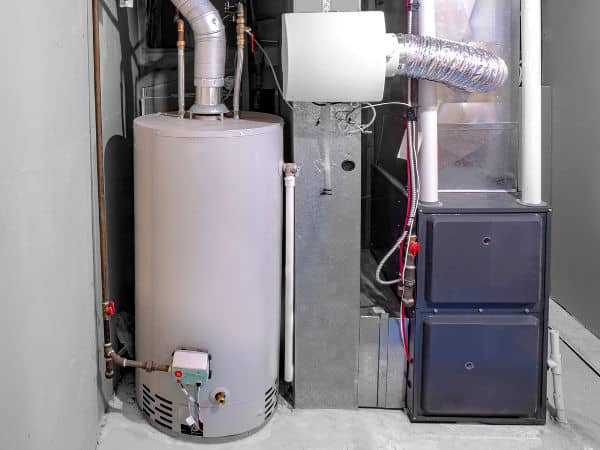Expert Guidance for Caring for Your Home's Hot Water System
Expert Guidance for Caring for Your Home's Hot Water System
Blog Article
This article below relating to Water Heater Maintenance Tips You Can't Afford to Forget is exceedingly captivating. Don't bypass it.

Hot water is essential for daily convenience, whether it's for a rejuvenating shower or cleaning recipes. To guarantee your warm water system runs effectively and lasts much longer, routine upkeep is vital. This write-up provides sensible tips and understandings on just how to keep your home's warm water system to stay clear of disturbances and pricey repair services.
Intro
Keeping your home's warm water system could seem difficult, however with a couple of basic steps, you can guarantee it runs smoothly for years to come. This guide covers whatever from comprehending your warm water system to DIY maintenance tips and understanding when to contact expert help.
Value of Keeping Your Warm Water System
Regular maintenance not only prolongs the life expectancy of your hot water system however likewise guarantees it runs successfully. Neglecting upkeep can cause decreased effectiveness, higher power expenses, and even premature failure of the system.
Signs Your Warm Water System Demands Maintenance
Knowing when your warm water system needs attention can prevent significant problems. Look out for indicators such as irregular water temperature, strange sounds from the heater, or corroded water.
Understanding Your Warm Water System
Before diving right into upkeep tasks, it's helpful to comprehend the fundamental components of your hot water system. Normally, this includes the water heater itself, pipelines, anode rods, and temperature level controls.
Monthly Maintenance Tasks
Routine regular monthly checks can aid catch small concerns before they intensify.
Flushing the Hot Water Heater
Purging your hot water heater gets rid of debris build-up, improving efficiency and prolonging its life.
Monitoring and Replacing Anode Rods
Anode rods prevent corrosion inside the tank. Examining and replacing them when worn out is essential.
Inspecting and Adjusting Temperature Level Setups
Readjusting the temperature level setups makes sure optimum efficiency and security.
DIY Tips for Maintenance
You can perform several maintenance jobs on your own to maintain your warm water system in leading condition.
Checking for Leaks
Frequently inspect pipelines and links for leaks, as these can bring about water damages and greater expenses.
Checking Pressure Alleviation Valves
Examining the stress safety valve ensures it functions correctly and protects against excessive stress accumulation.
Insulating Pipes
Protecting warm water pipes lowers warmth loss and can save energy.
When to Call a Specialist
While DIY maintenance is advantageous, some concerns require professional competence.
Complex Problems Calling For Expert Help
Instances consist of major leakages, electrical troubles, or if your water heater is continually underperforming.
Routine Specialist Upkeep Benefits
Specialist maintenance can include complete assessments, tune-ups, and making sure conformity with safety criteria.
Conclusion
Normal upkeep of your home's warm water system is necessary for effectiveness, longevity, and cost savings. By following these pointers and recognizing when to look for expert assistance, you can guarantee a reliable supply of warm water without unanticipated interruptions.
How to Maintain an Instant Hot Water Heater
Before tinkering with your hot water heater, make sure that it’s not powered on. You also have to turn off the main circuit breaker and shut off the main gas line to prevent accidents. Also turn off the water valves connected to your unit to prevent water from flowing into and out of the appliance. 2. When you’re done, you have to detach the purge valves’ caps. These look like the letter “T†and are situated on either side of the water valves. Doing so will release any pressure that has accumulated inside the valves while at the same time avoid hot water from shooting out and burning your skin. 3. When the purge valves’ caps are removed, you have to connect your hosing lines to the valves. Your unit should have come with three hoses but if it didn’t, you can purchase these things from any hardware or home repair shops. You can also get them from retail stores that sell water heating systems. Read the user’s manual and follow it to complete this task properly. When the hosing lines are connected, open the purge port’s valves. 4. You should never use harsh chemical cleaners or solutions when cleaning your unit. Make use of white vinegar instead. It should be undiluted and you’ll probably use about 2 gallons. 5. Now flush your water heater. This task should probably take about 40 minutes. We can’t give you specific directions for this because the procedure is carried out depending on the type, model and brand of your heater. With that being said, refer to the user’s manual. 6. When you’re done draining the unit, you have to turn off the purge port valves again. Remove the hosing lines that you earlier installed on each of the water valves. Put the valve caps (purge port) back in their respective places and be very careful so as not to damage the rubber discs that are found inside these caps. 7. Now that everything’s back in place, check your user’s manual again to find out how to reactivate your water heating system. 8. Once it is working, turn one of your hot water faucets on just to let air pass through the heater’s water supply pipes. Leave the tap on until water flows smoothly out of it. https://www.orrplumbing.com/blog/2014/september/how-to-maintain-an-instant-hot-water-heater/

As an avid reader about How to Maintain Your Water Heater & Prolong its Life, I imagined sharing that piece was worthwhile. Feel free to take the opportunity to share this write-up if you appreciated it. Thanks for your time. Please come by our site back soon.
Click Here Report this page